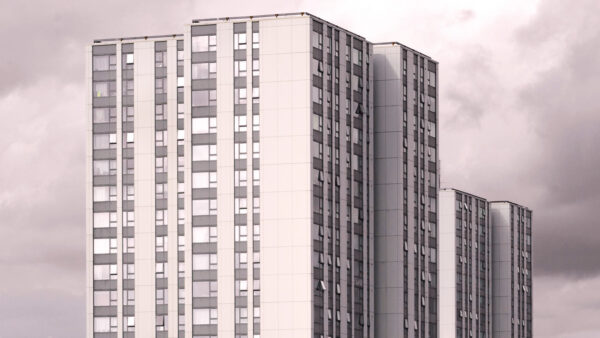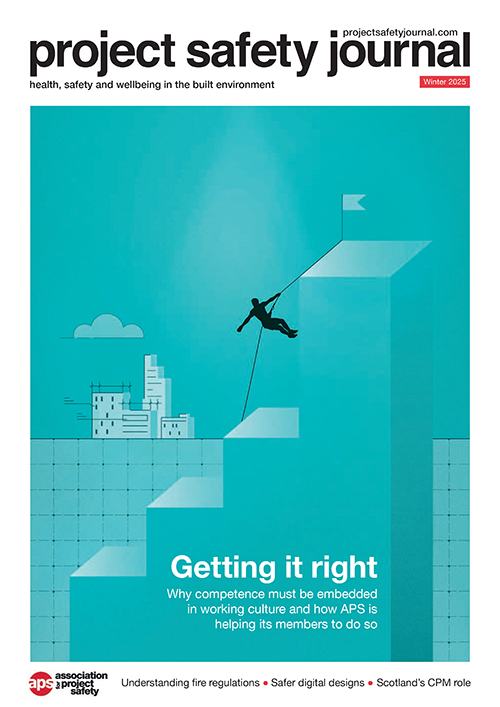
The industry is still getting to grips with the newly created dutyholder role of principal designer for building regulations. So are PII insurers. Samantha Peat offers advice on keeping premiums down
Professional indemnity insurance (PII) has been in a state of crisis since 2020. This has been driven by increased loss ratios (where claims exceed those expected when premiums were set), the lack of risk appetite in the insurance market exacerbated by lockdown and the catastrophic systemic fire safety risk exposed by the Grenfell Tower tragedy.
While the insurance market has recovered a little in the last four years – premiums have started to at least plateau and cover for fire safety has been reintroduced – it now faces further uncertainty and risk in the form of a new dutyholder: the principal designer.
Four things to note
There are four things that you must understand to put this into context:
- PII is written on a ‘claims made’ basis. This means the insurer that you are with at the time you become aware of a problem pays any resulting claim, not the insurer that you were with when you made the error that resulted in or contributed to the claim.
- Parties to a project have joint and several liability. This means that if a client sues everyone involved on a problem project, one firm could be just 1% liable for the client’s loss but end up paying 100% of the client’s claim and asking insurers to cover this.
- Insurers have a duty to make a profit for their shareholders. Insurers are not charities, they are commercial entities in the business of risk transfer. If claims (and operating expenses) exceed premiums, they are failing in their duty to their shareholders. It should not be a surprise, therefore, when insurers increase premiums or put exclusions on policies to avoid large or systemic claims that they did not price into the premium and that affect profitability.
- PII cannot cover criminal liability but generally covers civil liabilities and contractual liabilities, so long as those contractual liabilities are no more onerous than the insured’s liability would be in the absence of that contract.
Covering the new dutyholders
So, let’s think about how these four elements feed into insurers’ appetite for covering the new dutyholders under the Building Safety Act 2022 (BSA) of principal designer (PD).
One thing first – there is a distinct difference between a PD under the Construction (Design and Management) Regulations 2015 (CDM) and a PD under the BSA. Both are concerned with safety (not just fire safety and not just for high-rise buildings) and have criminal sanctions, including prison sentences.
However, while several different professionals could undertake the PD role under CDM, it is not yet clear whether the BSA drafting will make it difficult for anyone other than an architect or D&B contractor to fulfil the lead designer and PD role.
Insurers are receiving claims today arising out of work done years ago and changes in laws and regulations (like the BSA) or systemic problems (such as cladding) can make what was low-risk work higher risk in terms of frequency and severity of claims.
The insurance principle of risk transfer becomes problematic when assumptions are wrong, and uncertainty makes the profitability of the risks underwritten different to that envisaged.
Add to this the fact that insurers might end up paying 100% of the client’s claim when their insured was only arguably 1% liable for the loss. This tends to happen if the other parties to the project that should be paying their fair share have stopped trading or don’t have insurance cover or the assets to pay in the absence of insurance cover.
Keeping premiums down
This explains why it was not just one or two insurers that increased premiums and put broad exclusions on cover relating to fire safety after the Grenfell Tower tragedy – not only did insurers have more claims than they expected coming through, but they might end up paying for the negligent acts of others if they kept cover in place while others did not. This would make them unprofitable and drive away support from investors.
So how do insurers view the new PD dutyholder role and how can you make sure you keep your premiums to a reasonable level for adequate cover?
Broadly, insurers welcome the steps that are being taken to improve safety, particularly fire safety and particularly for high-rise buildings, so long as these steps do not create new or greater liabilities for their insureds that will increase risk or uncertainty.
What can you do for your own PII?
Try to use standard form contracts with little or no amendment and a clear responsibilities matrix.
Ask to have a conversation with your broker and your insurer about what you are doing as a business to adapt your work processes to fall in line with the new regulations.
Ask your broker and insurer to work with you to identify and push back on onerous contract terms that could fall outside cover.
Keep records for longer than you would normally (12-15 years) as the limitation period under the DPA is now 30 years retrospectively and 15 years prospectively. This will help insurers if you face a claim under the DPA.
There were concerns in the drafting stages of the Act that PDs and principal contractors (PCs) would be asked to certify compliance with building regulations on behalf of the project team, but this is not the case. However, if section 84 of the
Building Act is enforced, as government has suggested might be the case in future, this will introduce strict liability for compliance with the building regulations.
This is a problem for insurers because strict liability means that a defence of ‘I did not act negligently, I acted with reasonable care and skill’ cannot be used. This increases the risk and could lead insurers to increase premiums or exclude this risk from cover to protect their profits.
Demonstrating competence
Insurers also broadly welcome the steps being taken by the construction industry to demonstrate competence around safety, particularly fire safe design.
In January 2024 the International Underwriting Association hosted an event for insurers and brokers to hear from the Construction Industry Council, the Building Safety Regulator (BSR), and the legal profession.
At that conference underwriters acknowledged that much had been done and would continue to be done around competence. However, two concerns arose from the discussions – the first was around the lack of resources at that point in time at the BSR and the second was around contractual liabilities.
Construction professionals cannot claim against insurance for their criminal liabilities (it is contrary to public policy to insure criminal activity) but criminal liabilities can be ‘dragged and dropped’ into contracts as contractual liabilities. Claims rarely go all the way to court and, putting the Defective Premises Act 1972 (DPA) to one side for a moment, professionals rarely face claims other than breach of contract.
Amended contracts
If clients use a standard form contract (eg, one issued by the RIBA or RICS) unamended, the terms of the contract are both reasonable and covered by most professional indemnity insurance policies. The problem is that, other than small-scale domestic projects, clients and their solicitors want to use heavily amended contracts. Often the amended contracts contain onerous terms which are at best unfair and at worst not insured.
If the liabilities written into the contract would not exist in the absence of the contract, claims arising from the contractual terms may well fall outside cover. This means that either the client will be unable to recover their claim because there is no insurance to fund the claim, or the uninsured will have to pay the claim and could go out of business as a result.
The Construction Leadership Council’s (CLC’s) PII Working Group is working with the CLC to endorse sensible guidance already out there (BuildUK, GIRI, CLC), to encourage the authors of standard contracts and the Construction Playbook to highlight this issue, and to ask government to lead by example by encouraging local authorities to issue and negotiate sensible and insurable contract terms.
Samantha Peat is chair of the Construction Leadership Council’s Professional Indemnity Insurance Working Group. She is a group board adviser to Meridian Risk Solutions and former senior underwriting director of the Wren Insurance Association.











